SC Rewind: Shoes Of A Horseperson
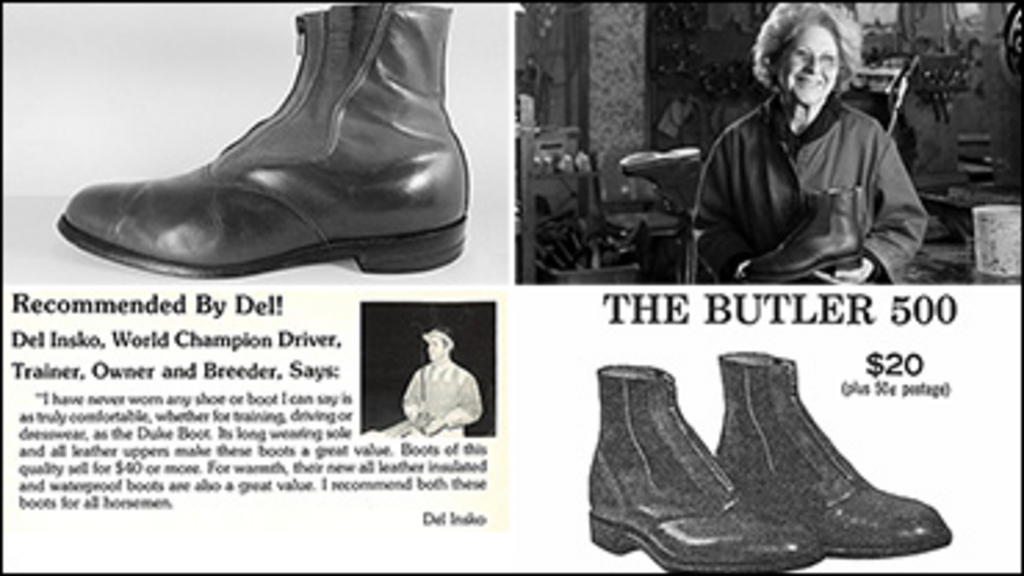
In the latest edition of 'Rewind,' Robert Smith has opted for a somewhat different topic. His piece talks about the rather unique footwear worn by most people involved in the sport of harness racing. This offering covers a couple of suppliers history and involvement in the shoe trade and also a few old photos.
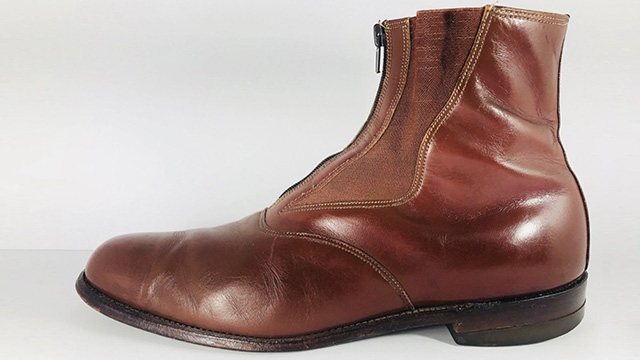
The famous Kroop boot manufactured in Maryland for almost a century at the same location (Kroop Co. archives)
This little piece talks a bit about the unique and specially designed type of shoes that most horse people have worn forever and a bit of history behind them. In recent times drivers have become very aware of their appearance while competing and take great pride in their clothing and footwear. Just how the choice of this type of footwear all came about I am not at all certain so if you have any insights please feel free to share them.
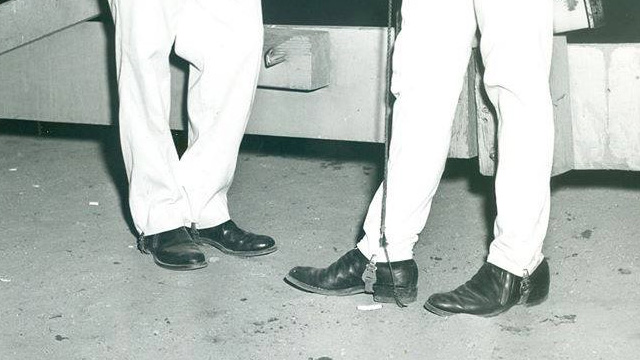
These two gentlemen are each wearing a slightly different version of the type of shoes that nearly all horse people wear. It just happens to be the subject of this week's story. In case you're wondering, I'm saving the top part of this photo for a later date.
For as long as anyone can remember, horsepeople have worn a specific type of shoe. They appear in old pictures as far back as you care to look. These shoes are simple in design, often with a zippered front or side and elastic gore insert. They have been standard "issue" for anyone in the horse business, and in varying styles still exist to this day.
I have often seen people out in places like stores, gas stations and other spots (maybe even a Tavern) and without knowing the person, I could tell what line of work they were in just by looking at their shoes! I can't help but wonder if that distinction could be claimed by many other occupations.
One of the foremost manufacturers of these types of shoes in the U.S. was A.M. Kroop & Sons Inc., located in Laurel, Maryland. Their Company dated back to 1907 when Adolph Michael Kroop brought his shoe making trade from Latvia to America. At one time he had produced footwear for the Russian Army. He first set up shop in New York and then in 1927, moved to Maryland and located in an area near several thoroughbred tracks. He and succeeding generations of his family continued to supply the horse industry for all of those years until they closed forever in 2018. Although Mr. Kroop died in 1966, his vision continued right up until its closing.
Adolph's granddaughter Randy Kroop took over the business in 1979 and said she would try it for five years. Five turned into 40 and she continued to successfully operate it until its recent closing using the same 125-step process first started by her ancestors. Much of the equipment they used dated back to the 1930's. Ms. Kroop chose to close the business rather than attempt to sell it, fearing that someone purchasing it would not continue their high standards. In a recent interview she said "Every person I met was just about the money, they didn't care about the product and I'm not willing to put my name on that." Randy's two children were not interested in taking over the business so the decision was regretfully made; she just couldn't find the right buyer.
One of the Company's most popular and successful products is shown in a photo above. It was listed as #101 and referred to as a "Zippered Jodhpur" and also came in a Cuban-heeled version. It was first introduced in 1930 and amazingly it remained extremely popular through the years, undergoing little if any change in design. Its price was advertised fairly recently as "Starting at $315.00 per pair."
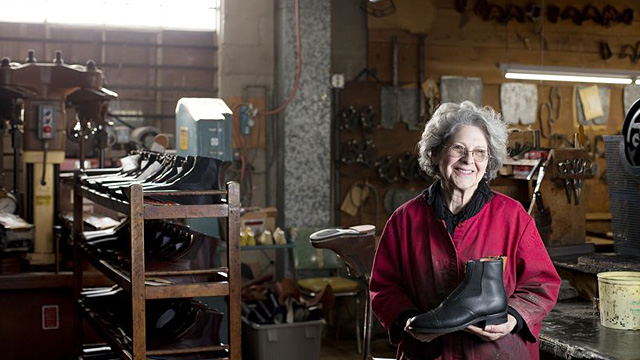
Randy Kroop is shown above in the family owned and operated factory in Laurel, Maryland. She is holding a pair of famous shoes that her firm manufactured for close to a century. She started her involvement at the age of six when her father allowed her to do little jobs at the factory. Visible in the background are racks of shoes and also the shop where thousands of pairs of shoes were handcrafted, mainly for the horse racing industry. (Baltimore Sun photo)
The following is an excerpt from the firm's website outlining their Corporate philosophy as defined by the founder's granddaughter Randy Kroop who continued to run the Company right up until its closing:
"I've tried to maintain the old world ways in the years I've run A.M. Kroop and Sons, Inc. I like the idea that when someone walks through our door they feel as though they've gone through a time machine. Stepping back to the way things were — slower paced — where quality counts — where special needs are met — and time given to those who wish to remember those times.
I've tried very hard to keep our product the same quality as my grandfather and father. I do not cut corners. The process is the same 125 steps today as it was decades ago. The reason for our success has nothing to do with being savvy business people, for we are not. I'm an artist and a craftsperson. The fact that we make a very good product and try to meet the needs of our customers is the reason we are successful."
The Kroop Company had a long and interesting history. While much of their business was done with the thoroughbred folks they also sold a lot of their famous shoes to Canadian-based harness drivers as well as those from the U.S. It was not unusual for horsemen vising either The Meadowlands or The Red Mile in Lexington to purchase several pairs; not only for themselves but for friends and family members.
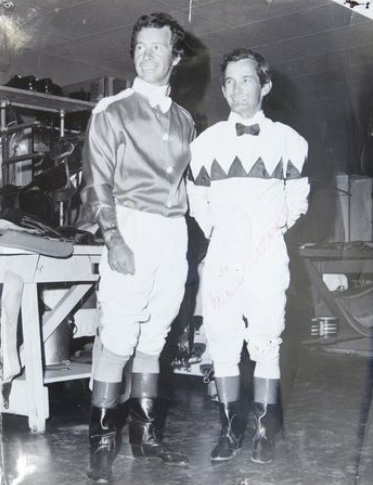
Eddie Arcaro (1916 -1997) was a regular Kroop Customer as was Willie Shoemaker (1931 - 2003) the American jockey who held the world record for most victories for almost 30 years. Kroop said Shoemaker's size 1-1/2 wooden shoe form was still at the shop when it closed. (Kroop Co. archives)
George Woolf (a Canadian born in Alberta) who rode Seabiscuit to win the famous race at Pimlico in 1938 wore boots from A.M. Kroop and Sons made of Kangaroo which was apparently very difficult to cut. The shop handcrafted about 25 pairs of authentic cowhide replicas for the 2002 movie 'Seabiscuit' which were worn by Gary Stevens the actor who played Woolf, and other jockey actors in the movie.
Butler Bros. Boot Co.
A lot of people may recall the once-popular Butler Bros. Boot Co. located for many years in Lewiston, Maine. They manufactured a line of footwear that was very acceptable to almost everyone involved in harness racing. Their shoes were so popular and prevalent that the name "Butler Boots" actually referred not only to their own products but to any shoe of that same style.
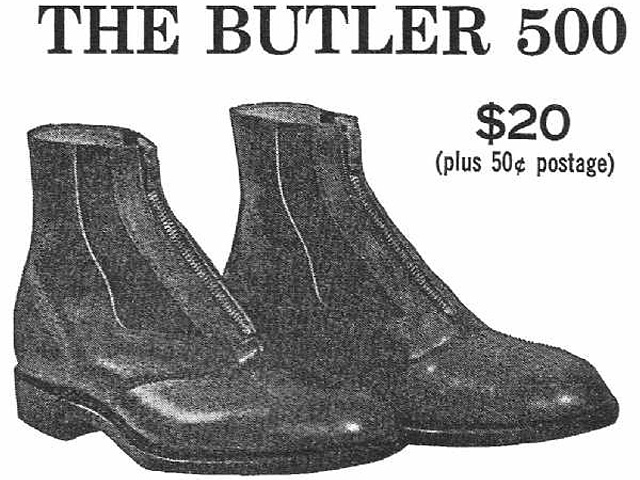
The above ad appeared in racing journals for many years; this one was taken from a 1967 issue of Hoof Beats. People ordered their shoes via mail and the Company promptly shipped them for an added 50 cents to cover their costs. The Butler Bros. Company was in business for many years but eventually their business interests changed and that combined with increased pressure from imports they discontinued the shoe making part of their activities.
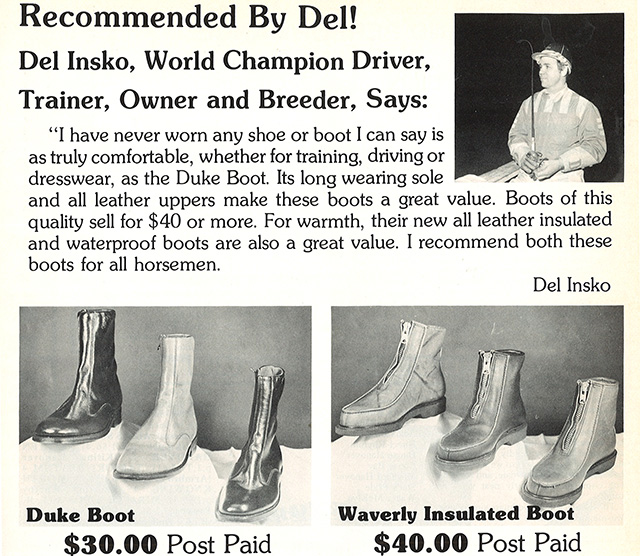
The above undated ad from about 40 years ago shows horseman Del Insko endorsing a brand of footwear worn by horse people called the "Duke Boot." I believe this line of footwear is still being made.
Closing Notes: Growing up I recall there being two types of shoes: "Everyday" and "Good". They came in a variety of colours, black and brown; it was not a complicated system. Getting a new pair was quite an event, ranking right up there with Christmas and your birthday! In those days if you had two pairs of shoes, you were lucky, plus you wore them until the soles and heels wore out (or fell off). Then if it was deemed they had some life left and they still fit, they were taken to the local shoemaker and new soles and heels were installed. Such was life in what we called The Good Old Days.
Nowadays most people have multiple pairs of shoes, literally one for every occasion.
Quote For The Week: "A new broom sweeps clean but an old broom knows where the dirt is."
Who Is It?
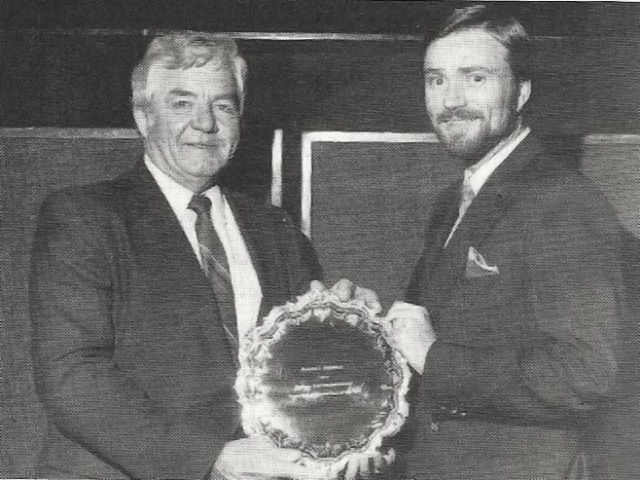
Can you identify these two gents on an award night?
Who Else Is It?
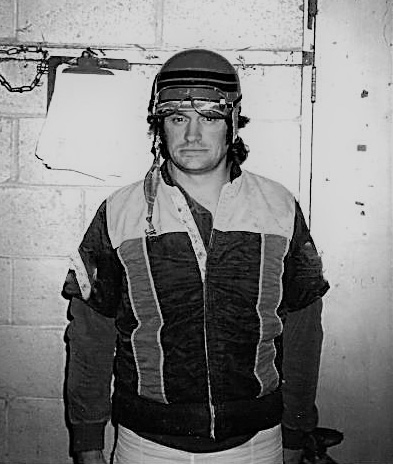
Can you put a correct name on this fellow? Stay tuned for the correct answers during the upcoming week.


This week's pictures didn't
This week's pictures didn't seem to be too difficult based on the number of correct answers. The correct ID's were as follows: Upper - Dr. Roly Armitage presenting a silver tray to John Kopas. Lower - Dale Williams in a photo taken at Leamington Raceway in the mid 1980's where he was a popular driver.
Note from Bill O'Donnell - His earlier comment reported buying his first pair of Butler boots for $16 but said the price rose a bit as he later parted with $280 for a pair of Kroops.
A very special thank you to Murray Brown for his very interesting comment on the Hanover shoes. Thanks
Regarding the story on
Regarding the story on horsemen's boots. Many people know Hanover Shoe Farms was co founded by Lawrence B Sheppard of the Hanover Shoe Company.
What very few people likely know is that Mr Sheppard had the shoe company produce a very limited horsemen's jodhpur boot which was never for sale.
He gave them to friends, customers and fellow horsemen.
I doubt that there are many of these boots still around.
I have a nearly mint condition pair of them, circa 1967, still in my possession.
I doubt that they will ever again be worn. But I will treasure them always.
On behalf of Mark Williams on
On behalf of Mark Williams on the "Who else is it?" pic:
"It's my best friend and big brother Dale Williams!"
The first pair of Butler
The first pair of Butler boots that I bought in 1965 from Irene Thibideau at Rockingham Park were $12 US.
Picture (1) Dr Roly Armitage/John Kopas
Top picture: Dr. Roly
Top picture: Dr. Roly Armitage and John Kopas
Lower picture: Dale Williams
Pic 2 - Dale Williams
Pic 2 - Dale Williams
1. Dr. Roly Armitage and
1. Dr. Roly Armitage and ....
First picture: Roly Armitage
First picture: Roly Armitage and a younger John Kopas. Guess on second one, Mark Williams.
John Kopas John Armitage Dale
John Kopas
John Armitage
Dale Williams
The one and only Dale
The one and only Dale Williams.
Roly Armitage, John Kopas.
Roly Armitage, John Kopas. Bottom Mark Williams
Top photo I will say Dr. Roly
Top photo I will say Dr. Roly Armitage and John Kopas, bottom photo Dale Williams.